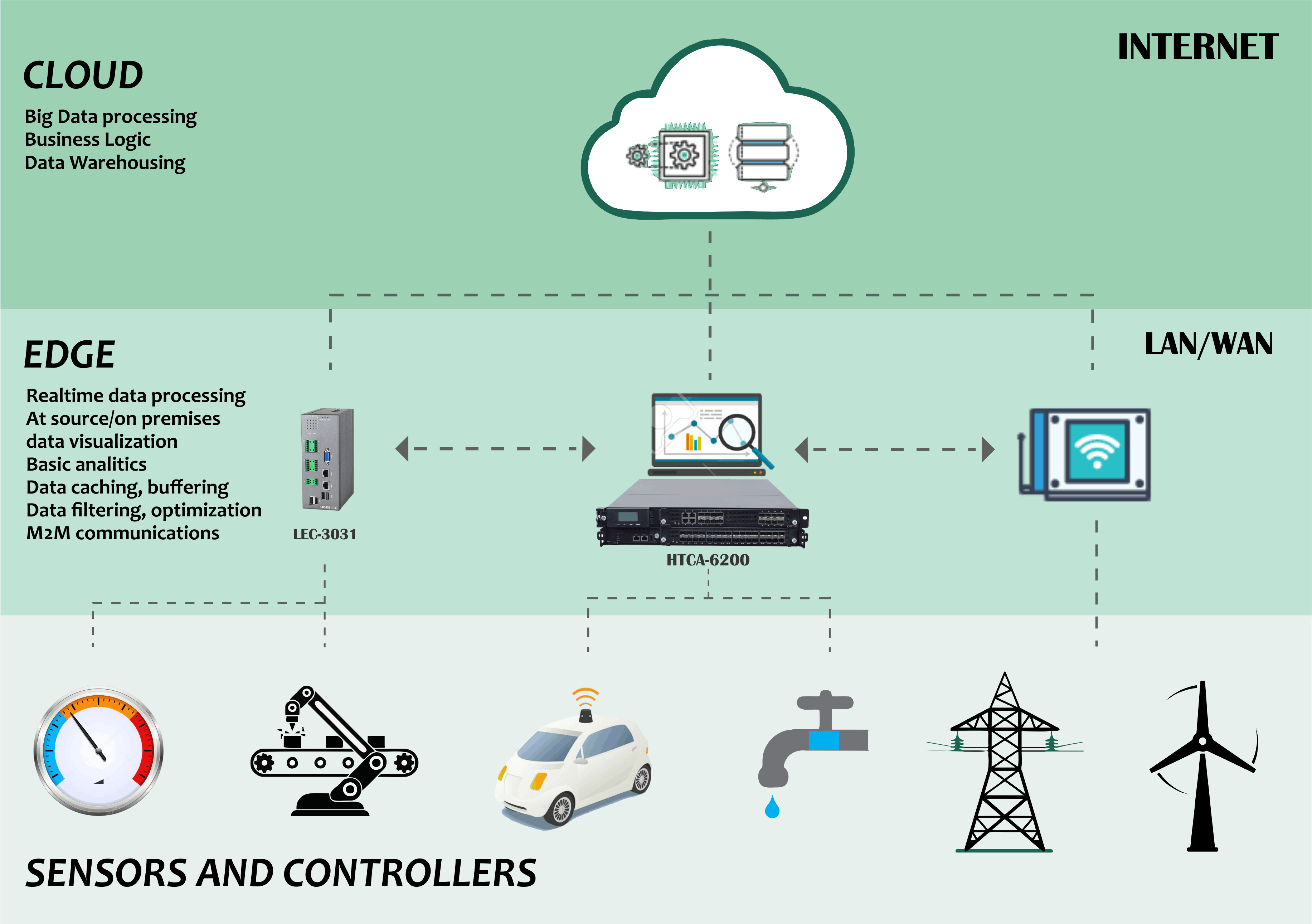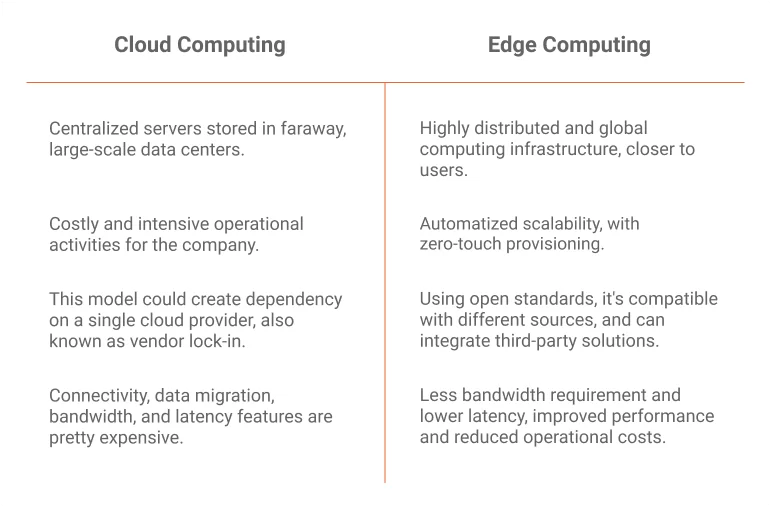Introduction
The goal of edge computing is to get computation as close as feasible to the data source in order to minimise latency and bandwidth consumption. Edge computing, to put it simply, is the practise of transferring fewer processes from the cloud to local locations, such as a user's PC, an IoT device, or an edge server. Reduced long-distance communication between a client and server results from moving computing to the edge of the network.

What is network edge?
The location of the device's or its local network's connection to the Internet is known as the network edge for Internet devices. The term "edge" might be a bit ambiguous; for instance, a user's computer or the processor within an IoT camera may be regarded as the network edge, but so may the user's router, ISP, or local edge server. The key insight is that, in contrast to origin servers and cloud servers, which may be physically remote from the devices they connect with, the network edge is located adjacent to the communication device.

Difference between edge computing and other computing models
The original computers were big, clunky devices that could only be used directly or through terminals, which were essentially extensions of the computer. The development of personal computers allowed for a far more decentralised method of computing. Personal computing once predominated as the main computing model. Applications were used and data was kept locally, possibly in an on-site data centre, on a user's device.
A more recent innovation, cloud computing, provided a variety of benefits over traditional locally based, on-premise computing. Cloud services can be accessible from any device via the Internet and are centralised in a vendor-managed "cloud" (or group of data centres).
However, due of the distance between consumers and the data centres where cloud services are hosted, cloud computing can cause latency. Edge computing maintains the centralised structure of cloud computing while bringing computation closer to end users to reduce the distance that data must travel.
To sum it up:
• Early computing: just had one isolated computer that was used to execute centralised applications.
• Individual computing: localised decentralised applications
• Cloud computing: centralised software running on data centres
• Edge computing: is the practise of operating centralised applications close to consumers, either on the device itself or at the edge of a network.

Use cases for edge computing
• A wide range of products, services, and applications can incorporate edge computing. Several options include:
• Monitoring security systems: As previously mentioned.
• IoT devices: For more effective user interactions, smart devices that connect to the Internet can benefit from running code locally rather than on the cloud.
• Autonomous vehicles: Autonomous vehicles must react instantly without waiting for commands from a server.
• More effective caching: An application can tailor how material is cached to more effectively serve content to users by running code on a CDN edge network.
• Medical monitoring equipment: It must react instantly without waiting to hear from a cloud server.
• Video conferencing: Moving backend activities closer to the source of the video can reduce lag and latency since interactive live video uses a lot of bandwidth.

Benefits of edge computing
• Cost saving
Edge computing reduces the need for bandwidth and server resources, as seen in the aforementioned case. Resources in the cloud and bandwidth are limited and expensive. As smart cameras, printers, thermostats, and even toasters become standard in every home and workplace, Statista projects that by 2025, there will be more than 75 billion IoT devices installed globally. It will be necessary to relocate a sizeable portion of computing to the edge in order to support all those devices.
• Performance
Reduced latency is a significant advantage of pushing processes to the edge. There is a delay every time a gadget has to communicate with a remote server. Using an IM platform, for instance, two employees in the same workplace can encounter a significant delay because each message must be routed outside the building, communicate with a server somewhere in the world, and then be brought back before it can be seen by the recipient. That observable delay would not exist if that procedure was pushed to the limit and the company's internal router was in charge of sending intra-office communications.
• New capabilities
Additionally, edge computing can offer brand-new features that weren't previously possible. For instance, a business can process and analyse data at the edge using edge computing, enabling real-time processing and analysis.
In summary, edge computing has the following main advantages:
1. Reduced latency
2. Reduced bandwidth usage and related costs
3. Reduction of server resources and related costs
4. Additional capabilities

Conclusion
CIOs are developing methods to personalise client experiences, produce quicker insights and actions, and sustain continuous operations whether they are in the banking, mining, retail, or just about any other business. Adopting edge computing, also known as a massively decentralised computing architecture, will enable this. However, there are specific use cases within each business that fuel the demand for edge IT.
